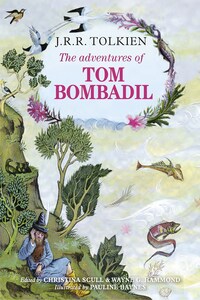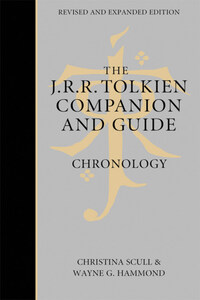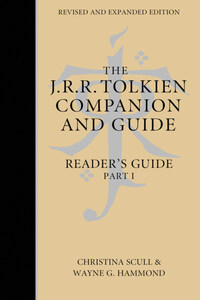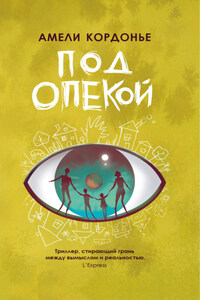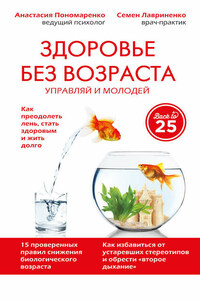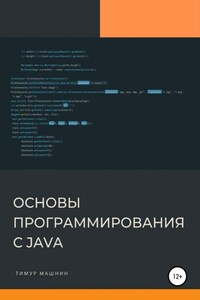HarperCollinsPublishers
77–85 Fulham Palace Road
Hammersmith, London W6 8JB
www.tolkien.co.uk
Published by HarperCollinsPublishers 2014
First published by George Allen & Unwin 1962
Copyright © The Tolkien Estate Limited 1962, 2014
Illustrations copyright © HarperCollinsPublishers 1962
Further copyright notices appear here
and ‘Tolkien’® are registered trade marks of The Tolkien Estate Limited
A catalogue record for this book is available from the British Library
All rights reserved under International and Pan-American Copyright Conventions. By payment of the required fees, you have been granted the non-exclusive, non-transferable right to access and read the text of this e-book on screen. No part of this text may be reproduced, transmitted, down-loaded, decompiled, reverse engineered, or stored in or introduced into any information storage and retrieval system, in any form or by any means, whether electronic or mechanical, now known or hereinafter invented, without the express written permission of HarperCollins.
Source ISBN: 97800057271
Ebook Edition © 2014 ISBN: 9780007584697
Version: 2014-09-12
In the first part of The Lord of the Rings, Frodo, Sam, Merry, and Pippin are crossing the Old Forest when they are attacked by the malevolent Old Man Willow. By good fortune, they are rescued by Tom Bombadil, ‘a man, or so it seemed’, singing nonsense and wearing ‘an old battered hat with a tall crown and a long blue feather stuck in the band’ and ‘stumping along with great yellow boots on his thick legs. … He had a blue coat and a long brown beard; his eyes were blue and bright, and his face was red as a ripe apple, but creased into a hundred wrinkles of laughter’ (bk. I, ch. 6). To the hobbits he is a saviour but a puzzle. When Frodo asks Goldberry, ‘who is Tom Bombadil?’ she replies simply, ‘He is’ – he, who at that moment is tending the hobbits’ ponies and can be heard singing
Old Tom Bombadil is a merry fellow;
Bright blue his jacket is, and his boots are yellow.
At this, Frodo looks at Goldberry ‘questioningly’, and she adds: ‘He is, as you have seen him. He is the Master of wood, water, and hill.’ Later, when Frodo asks Tom himself, ‘Who are you, Master?’ the reply is: ‘Don’t you know my name yet? That’s the only answer.’ But he too elaborates, referring to the wider mythology, or ‘matter of Middle-earth’, which underlies The Lord of the Rings: ‘Tom was here before the river and the trees; Tom remembers the first raindrop and the first acorn. He made paths before the Big People [Men and Elves], and saw the little People [Hobbits] arriving. He was here before the Kings and the graves and the Barrow-wights. When the Elves passed westward, Tom was here already, before the seas were bent’ (bk. I, ch. 7).
One reader of The Lord of the Rings, Peter Hastings, felt that Goldberry’s ‘He is’ implied that Tom Bombadil is God. Tolkien disagreed: ‘Goldberry and Tom are referring to the mystery of names. … Frodo has asked not “what is Tom Bombadil” but “Who is he”. We and he no doubt often laxly confuse the questions. Goldberry gives what I think is the correct answer. We need not go into the sublimities of “I am that am” [God’s words to Moses in Exodus 3:14] – which is quite different from he is. She adds as a concession a statement of part of the “what”’ (Letters of J.R.R. Tolkien (1981), pp. 191–2). Tolkien’s readers have advanced many theories about Tom, without consensus; we have touched upon these in The Lord of the Rings: A Reader’s Companion (2005), and will not rehearse them here. Although one learns more about Tom Bombadil as The Lord of the Rings continues, in the end he does not fit neatly into any category. He does not clearly belong to any one of the groups of intelligent beings established in Tolkien’s private mythology, which also encompasses The Hobbit and the ‘legends’ of earlier days broadly referred to as ‘The Silmarillion’. Nor could there be a definite answer to the question Who (or What) is Tom Bombadil, when his creator did not have one himself. To one reader, Tolkien said that he did not know Tom’s origin, though he could make ‘guesses’, if he chose to do so, but preferred to leave Tom a mystery. To another, he commented that some things in the world of
